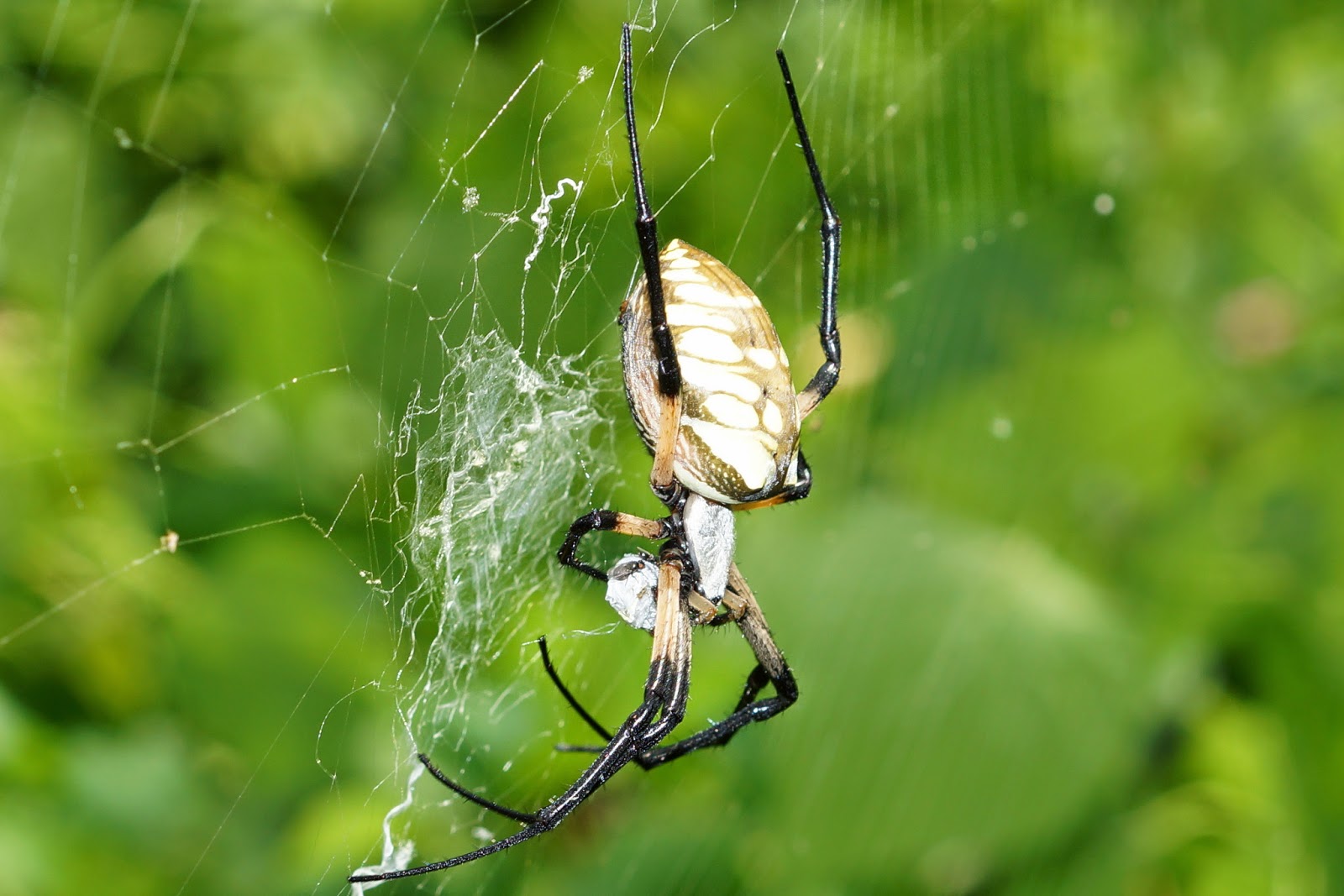 |
| A wild turkey, making a hasty retreat. |
Wednesday, November 26, 2014
Happy Thanksgiving!
To celebrate the holiday, I'm sharing this nice turkey I caught (just on camera, of course).
Friday, November 21, 2014
The birds in blue
While taking a walk in the small woodland near my apartment, I found that my sensitization to crow alarm calls this summer had carried over to one of their relatives: the blue jay (Cyanocitta cristata). I followed the jeering calls of several blue jays until I located the hawk at the center of the commotion.
With the mystery of what was upsetting the blue jays solved, I decided to record the blue jay's alarm calls. Thus, I fortuitously switched to video mode just in time to catch the startling climax of the confrontation between the blue jays and the hawk.
 |
| The hawk that had agitated the blue jays. |
* To see this video in high definition (1080p), you may need to:
(1) click "YouTube" to watch on the YouTube website
(2) change the settings at the bottom of the video screen
After successfully chasing off the hawk, the blue jays quieted down and I continued on a more peaceful walk.
Explore some more: Blue Jay (All About Birds)
Explore some more: Blue Jay (All About Birds)
Friday, November 14, 2014
Falling back, part three
The encounter that I observed between the black-and-yellow argiope and the wasp ended peacefully. However, when I went to check on the spider a few days later, there was evidence that it had gone through a more violent confrontation in the interim. Can you find what is missing in the picture below?
Either another predator targeted the spider or one of the spider's prey put up a fierce fight -- because the spider was down to seven legs.
Explore some more: Spiders Evolved Spare Legs
 |
| What is missing? |
Explore some more: Spiders Evolved Spare Legs
Monday, November 10, 2014
Falling back, part two
Although the wasp kept its distance, other insects were more willing to get close to the spider in order to get a meal. See if you can find them in the picture below.
If they are too small to find in the picture above, this close-up should help.
The spider is clutching a prey item already wrapped in white silk -- and if you look closely on the left and top of the white package, you can see two very small flies. These appear to be freeloader flies (Milichiidae), which are often found in the seemingly hazardous occupation of feeding on the kills of spiders and other predators.
 |
| The black-and-yellow argiope (Argiope aurantia) spider and its prey. |
 |
| Two small flies are sitting on the spider's wrapped-up prey. |
Friday, November 7, 2014
Falling back
Spiders can be predators of wasps, but sometimes the relationship is reversed and the spider becomes the prey. This summer I watched a dramatic encounter that unfolded too quickly for me to capture on camera. A spider was sitting on a leaf at the end of a tree branch while a large wasp hunted nearby. As the wasp drew near, the spider edged away and then dropped down a thread to hang in mid-air. For a few moments, it appeared that the spider had escaped the wasp's attention -- but then the wasp struck. I had a brief glimpse of the wasp and spider grappling each other before they plummeted to the ground. By the time they landed, the spider was already paralyzed or dead.
Not all spiders are so easily subdued, however. Take, for example, the black-and-yellow argiope, one of the largest orbweaver spiders in North America (along with the giant lichen spider and the golden silk spider).
As I was photographing this very imposing spider, a wasp came up and hovered to inspect the spider too.
If the disparity in size wasn't already enough to discourage the wasp from taking further action, a wave of the spider's legs seemed to complete the message.
The wasp retreated, leaving the spider undisturbed.
Not all spiders are so easily subdued, however. Take, for example, the black-and-yellow argiope, one of the largest orbweaver spiders in North America (along with the giant lichen spider and the golden silk spider).
 |
| A black-and-yellow argiope (Argiope aurantia) orbweaver spider. |
 |
| A wasp approaches the orbweaver spider. |
 |
| The orbweaver spider waving its legs. |
Subscribe to:
Posts (Atom)